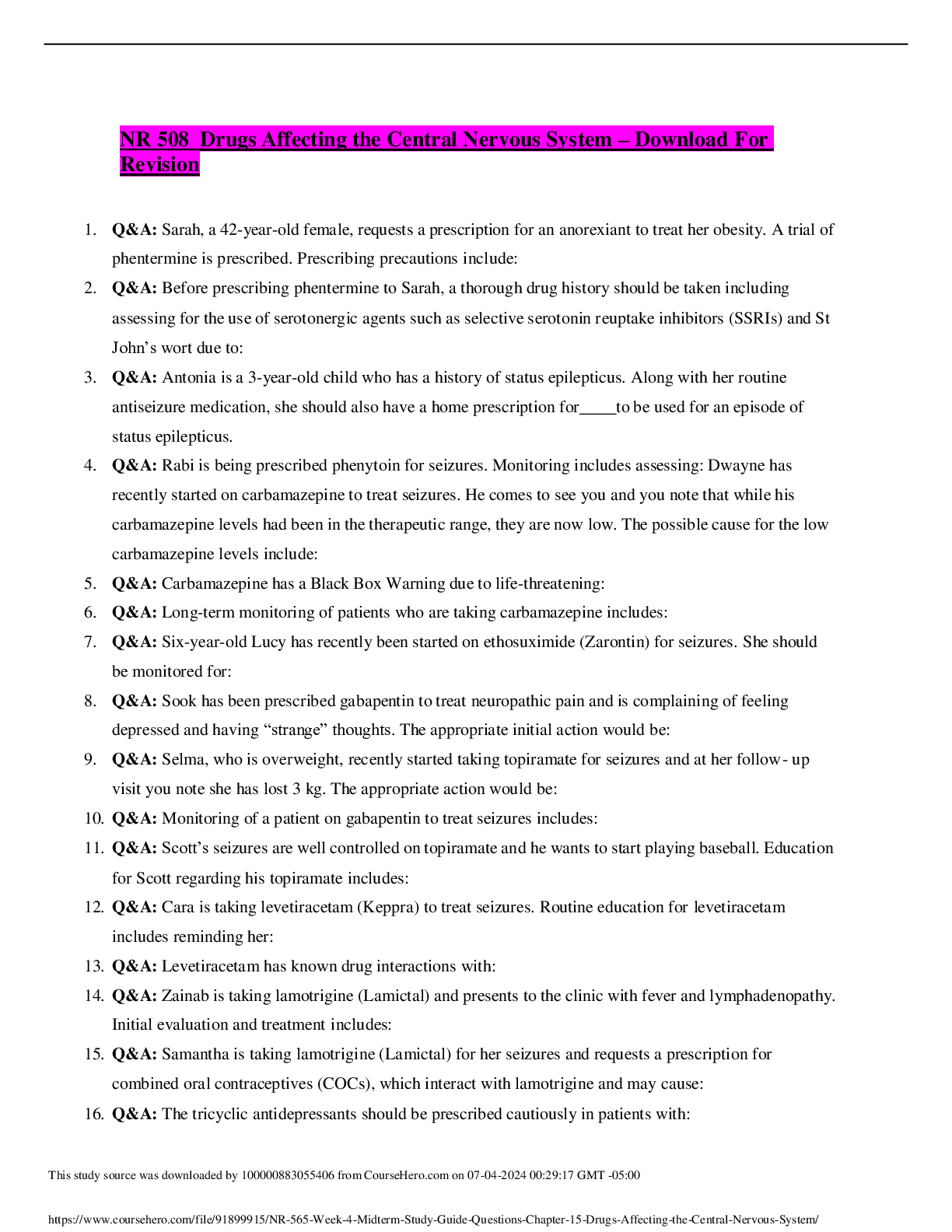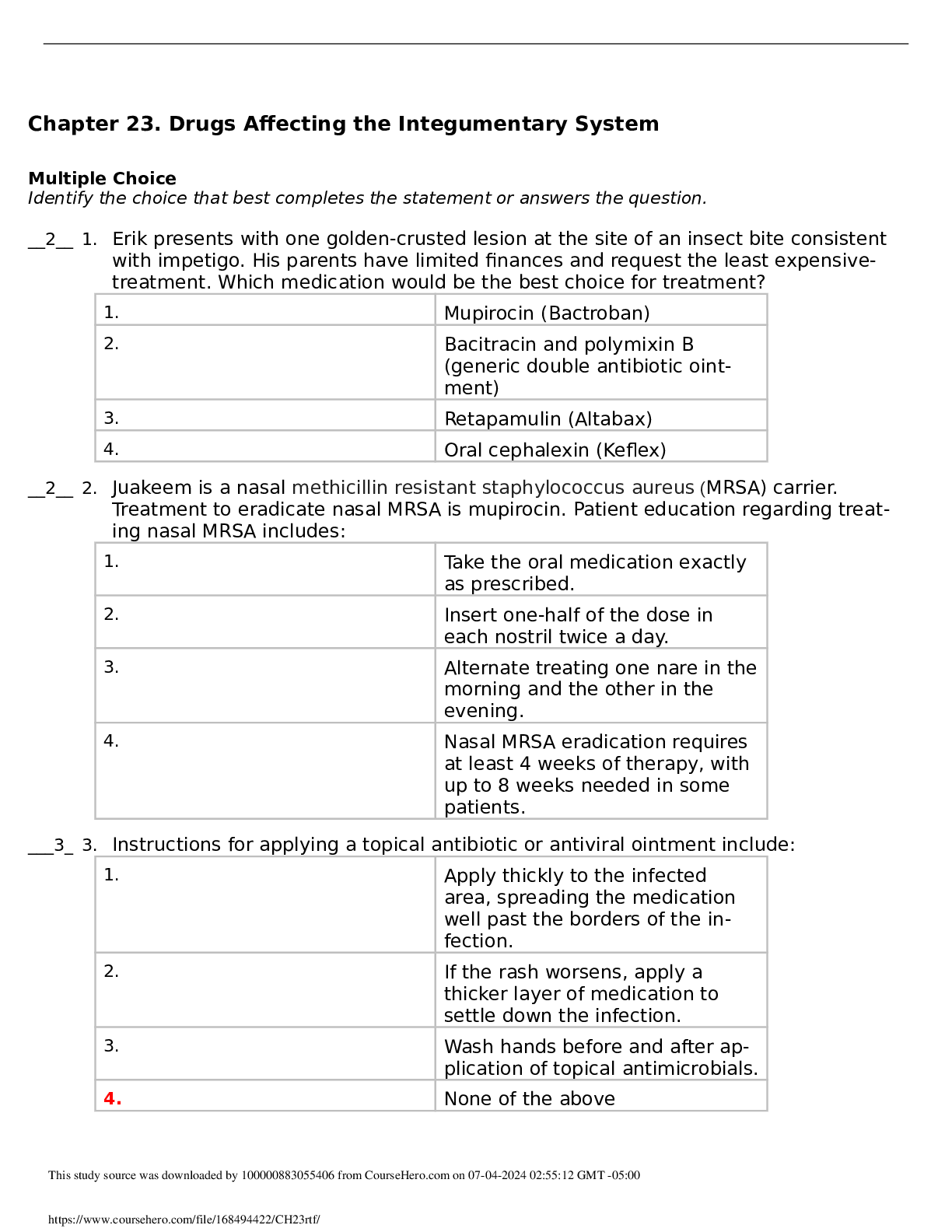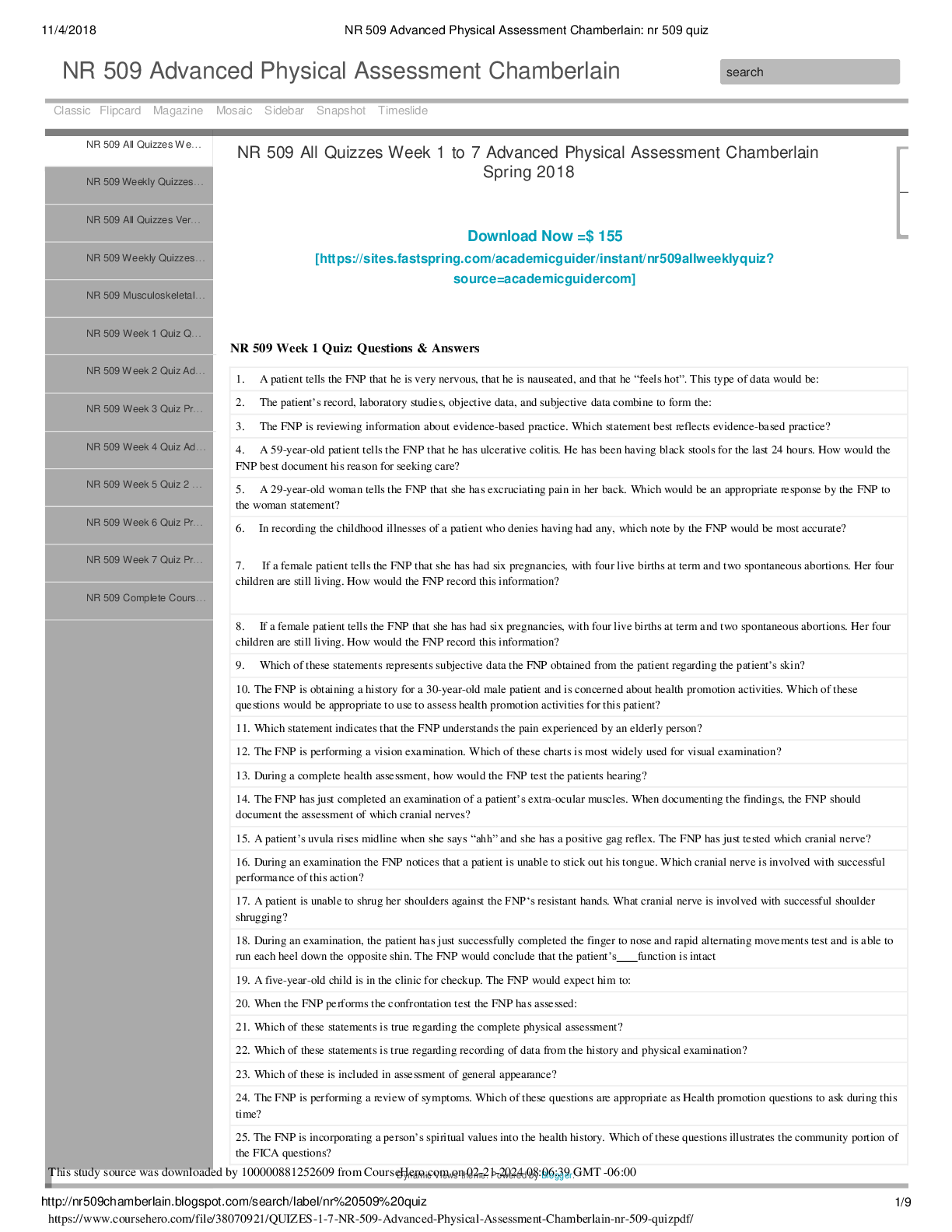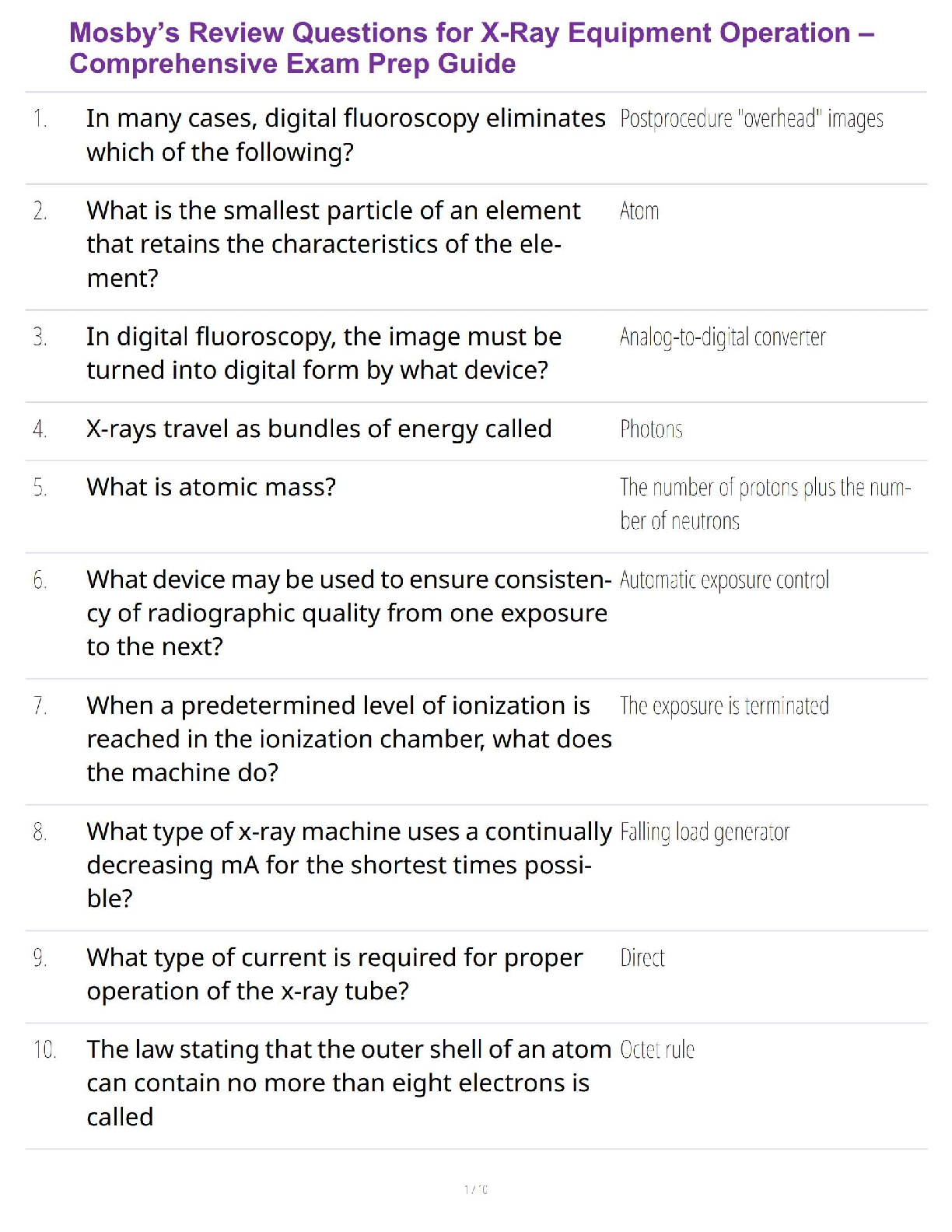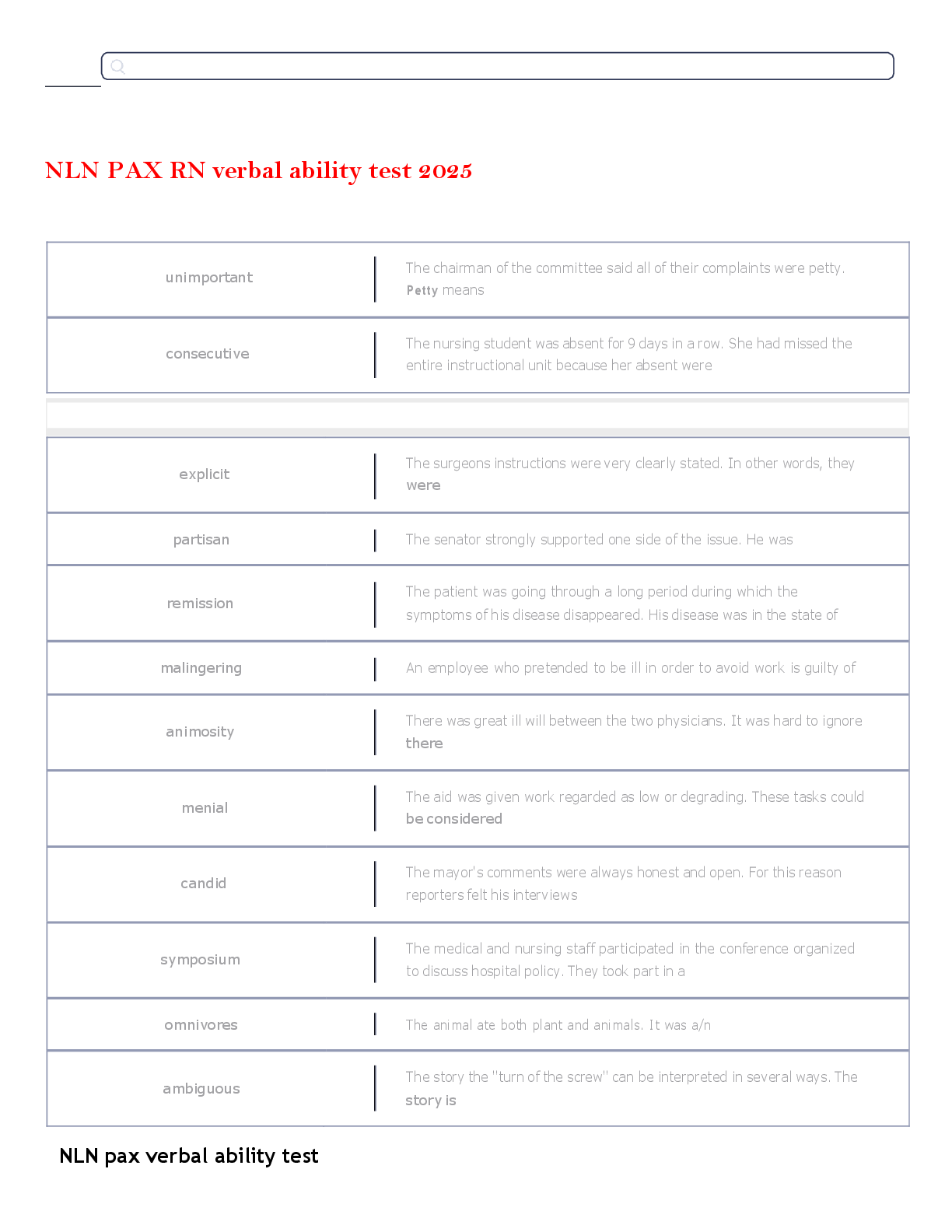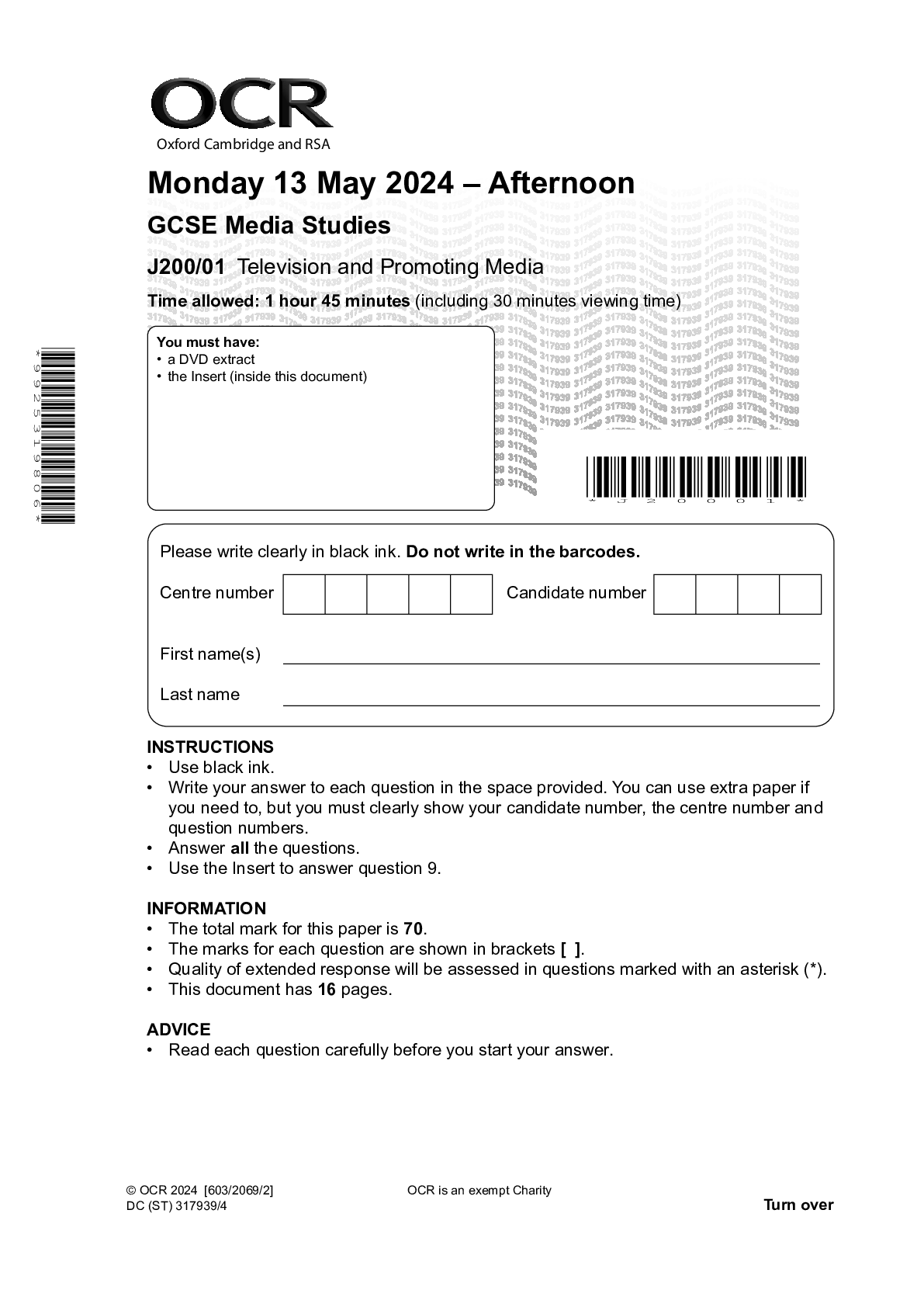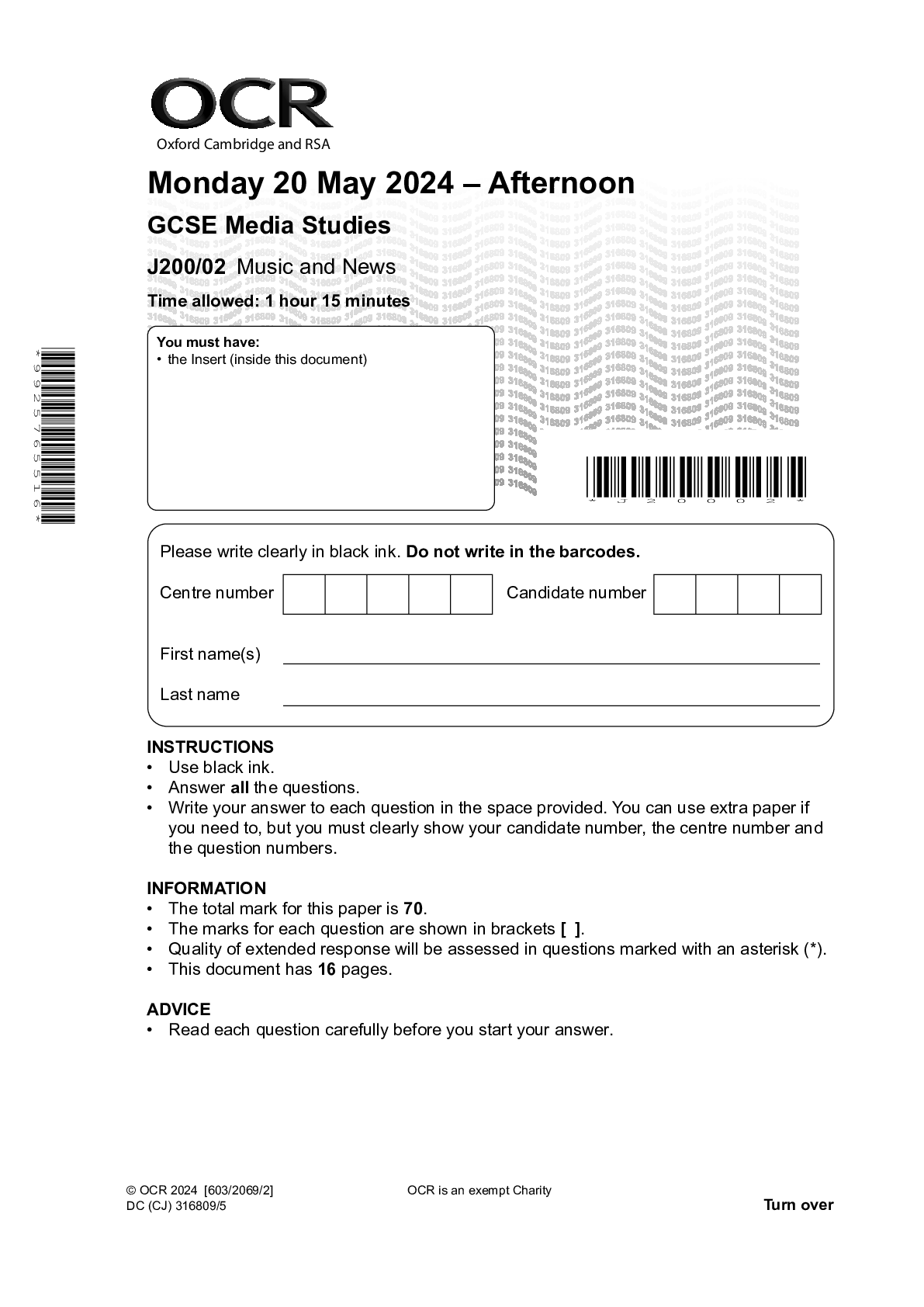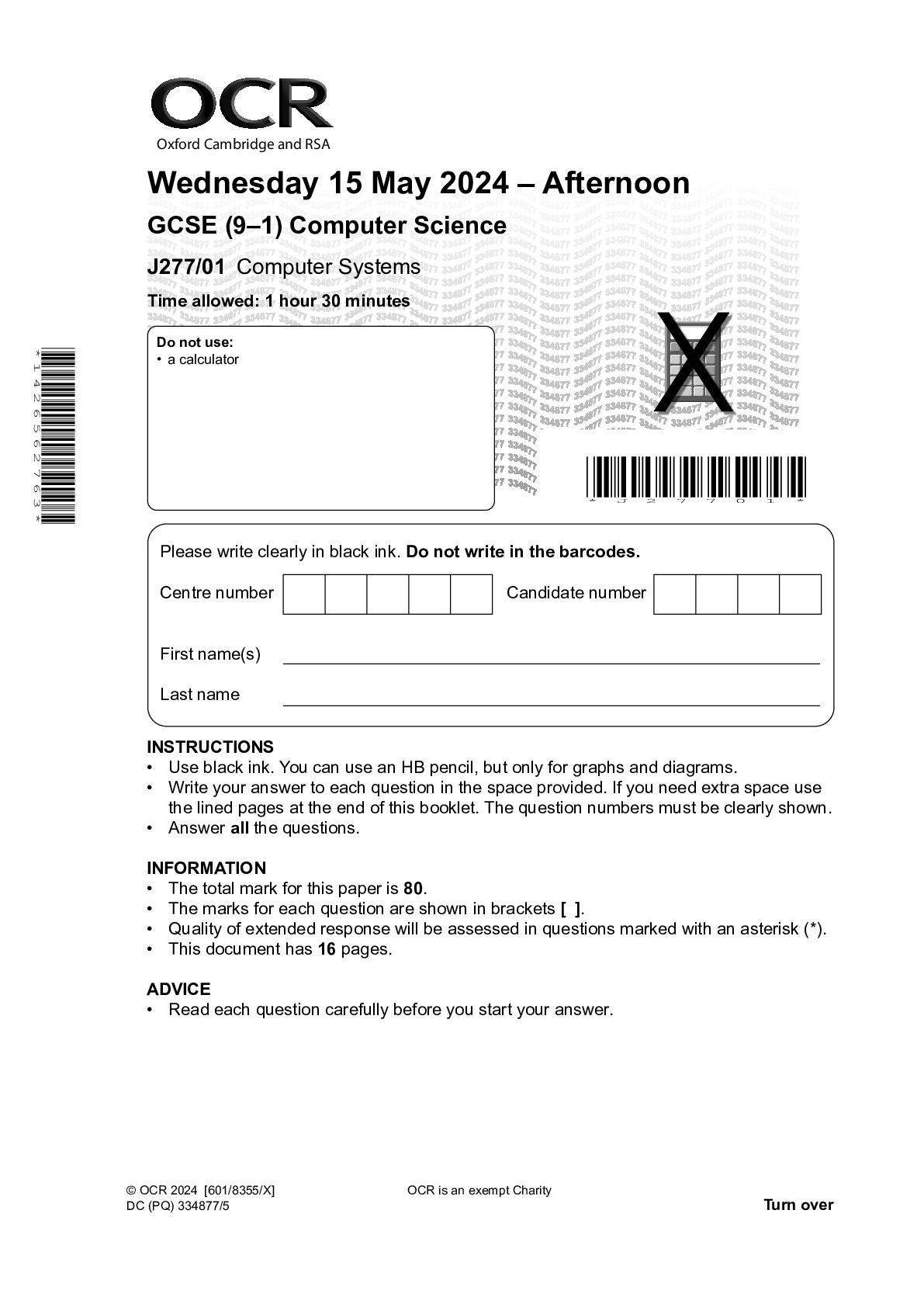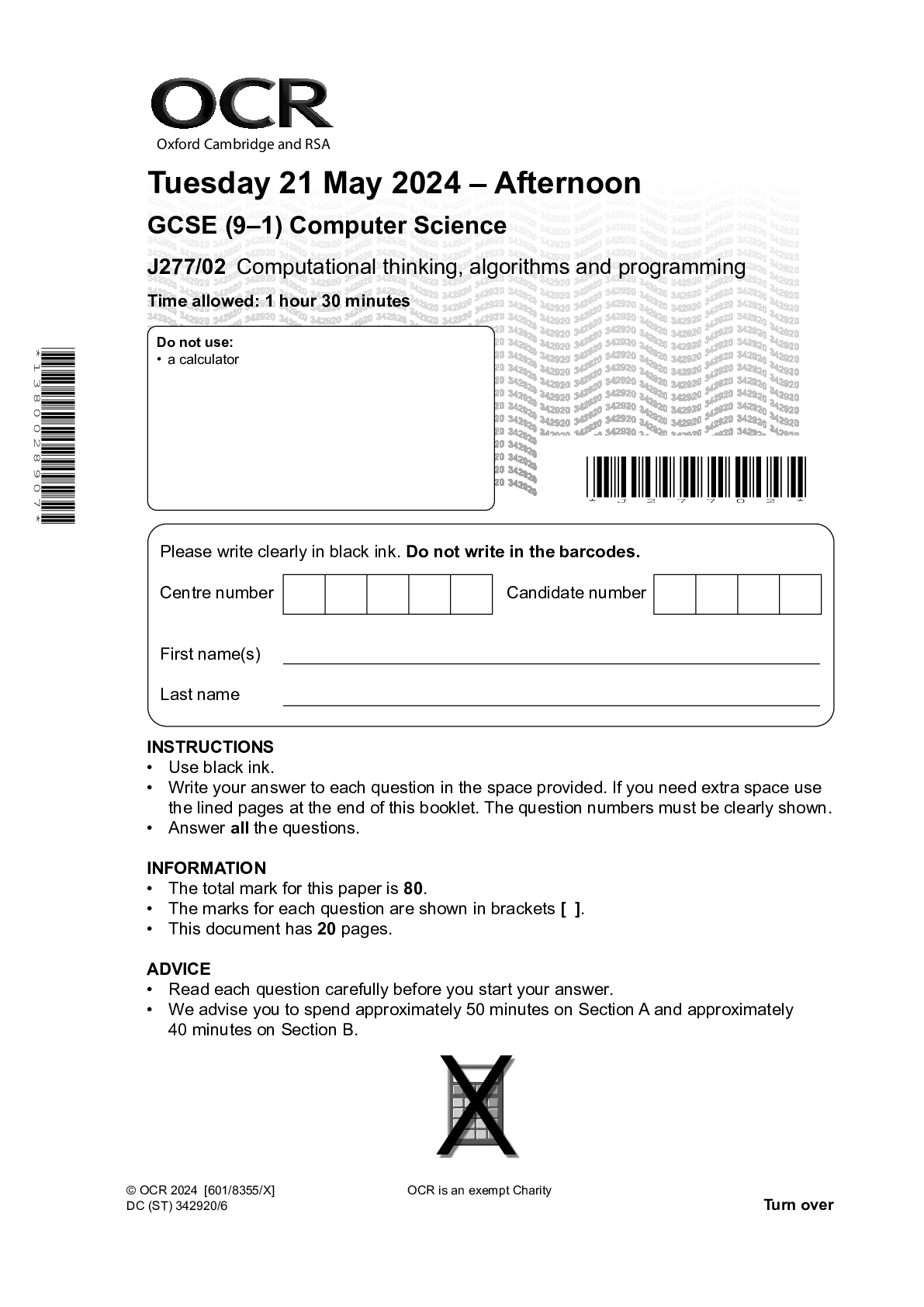Pharmacology for Nursing Care > QUESTION PAPER (QP) > NR 508 Chapter 29. Anxiety and Depression – Download For Revision (All)
NR 508 Chapter 29. Anxiety and Depression – Download For Revision
Document Content and Description Below
NR 508 Chapter 29. Anxiety and Depression – Download For Revision Multiple Choice Identify the choice that best completes the statement or answers the question. 4 3 ... 2 1 2 1 2 1. Common mistakes practitioners make in treating anxiety disorders include: 1. Switching medications after an 8- to 12-week trial 2. Maximizing dosing of antianxiety medications 3. Encouraging exercise and relaxation therapy before starting medication 4. Thinking a partial response to medication is acceptable 2. An appropriate second-line drug to try for mild to moderate generalized anxiety disorder would be: 1. Alprazolam (Xanax) 2. Diazepam (Valium) 3. Buspirone (Buspar) 4. Amitriptyline (Elavil) 3. An appropriate drug to initially treat panic disorder is: 1. Alprazolam (Xanax) 2. Diazepam (Valium) 3. Buspirone (Buspar) 4. Amitriptyline (Elavil) 4. Prior to starting antidepressants, patients should have laboratory testing to rule out: 1. Hypothyroidism 2. Anemia 3. Diabetes mellitus 4. Low estrogen levels 5. David is a 34-year-old patient who is starting on paroxetine (Paxil) for depression. David’s education regarding his medication would include: 1. Paroxetine may cause intermittent diarrhea. 2. He may experience sexual dysfunction beginning a month after he starts therapy. 3. He may have constipation and he should increase fluids and fiber. 4. Paroxetine has a long half-life so he may occasionally skip a dose. 6. Jamison has been prescribed citalopram (Celexa) to treat his depression. Education regarding how quickly selective serotonin reuptake inhibitor (SSRI) antidepressants work would be: 1. Appetite and concentration improve in the first 1 to 2 weeks. 2. Sleep should improve almost immediately upon starting citalopram. 3. Full response to the SSRI may take 2 to 4 months after he reaches the full therapeutic dose. 4. His dysphoric mood will improve in 1 to 2 weeks. 7. An appropriate drug for the treatment of depression with anxiety would be: 1. Alprazolam (Xanax) 2. Escitalopram (Lexapro) 3. Buspirone (Buspar) 1 4 4. Amitriptyline (Elavil) 8. An appropriate first-line drug for the treatment of depression with fatigue and low energy would be: 1. Venlafaxine (Effexor) 2. Escitalopram (Lexapro) 3. Buspirone (Buspar) 4. Amitriptyline (Elavil) 9. The laboratory monitoring required when a patient is on a selective serotonin reuptake inhibitor is: 1. Complete blood count every 3 to 4 months 2. Therapeutic blood levels every 6 months after a steady state is achieved 3. Blood glucose every 3 to 4 months 4. There is no laboratory monitoring required 2 10. Jaycee has been on escitalopram (Lexapro) for a year and is willing to try tapering off of the selective serotonin reuptake inhibitor. What is the initial dosage adjustment when starting a taper off antidepressants? 1. Change dose to every other day dosing for a week 2. Reduce dose by 50% for 3 to 4 days 3. Reduce dose by 50% every other day 4. Escitalopram (Lexapro) can be stopped abruptly due to its long half-life 1 11. The longer-term Xanax patient comes in and states they need a higher dose of the medication. They deny any additional, new, or accelerating triggers of their anxiety. What is the probable reason? 1. They have become tolerant of the medication, which is characterized by the need for higher and higher doses. 2. They are a drug seeker. 3. They are suicidal. 4. They only need additional counseling on lifestyle modification. 2 12. What “onset of action” symptoms should be reviewed with patients who have been newly prescribed a selective serotonin reuptake inhibitor? 1. They will have insomnia for a week. 2. They can feel a bit of nausea, but this resolves in a week. 3. They will have an “onset seizure” but this is considered normal. 4. They will no longer dream. 3 13. Which of the following should not be taken with a selective serotonin reuptake inhibitor? 1. Aged blue cheese 2. Grapefruit 3. Alcohol 4. Green leafy vegetables 1 14. Why is the consistency of taking paroxetine (Paxil) and never running out of medication more important than with most other selective serotonin reuptake inhibitors (SSRIs)? 1. It has a shorter half-life and withdrawal syndrome has a faster onset without taper. 2. It has the longest half-life and the withdrawal syndrome has a faster onset. 3. It is quasi-addictive in the dopaminergic reward system. 4. It is the most activating of SSRI medications and will cause the person to have sudden deep sadness. 2 15. The patient shares with the provider that he is taking his Prozac at night before going to bed. What is the best response? 1. This is a good idea because this class of medications generally makes people sleepy. 2. Have you noticed that you are having more sleep issues since you started that? 3. This a good way to remember to take your daily medications because it is near your toothbrush. 4. This is a good plan because you can eat grapefruit if there is 8–12 hours difference in the time each are ingested. [Show More]
Last updated: 1 year ago
Preview 2 out of 4 pages

Loading document previews ...
Buy this document to get the full access instantly
Instant Download Access after purchase
Buy NowInstant download
We Accept:

Reviews( 0 )
$12.50
Can't find what you want? Try our AI powered Search
Document information
Connected school, study & course
About the document
Uploaded On
Jul 05, 2024
Number of pages
4
Written in
All
Additional information
This document has been written for:
Uploaded
Jul 05, 2024
Downloads
0
Views
112

